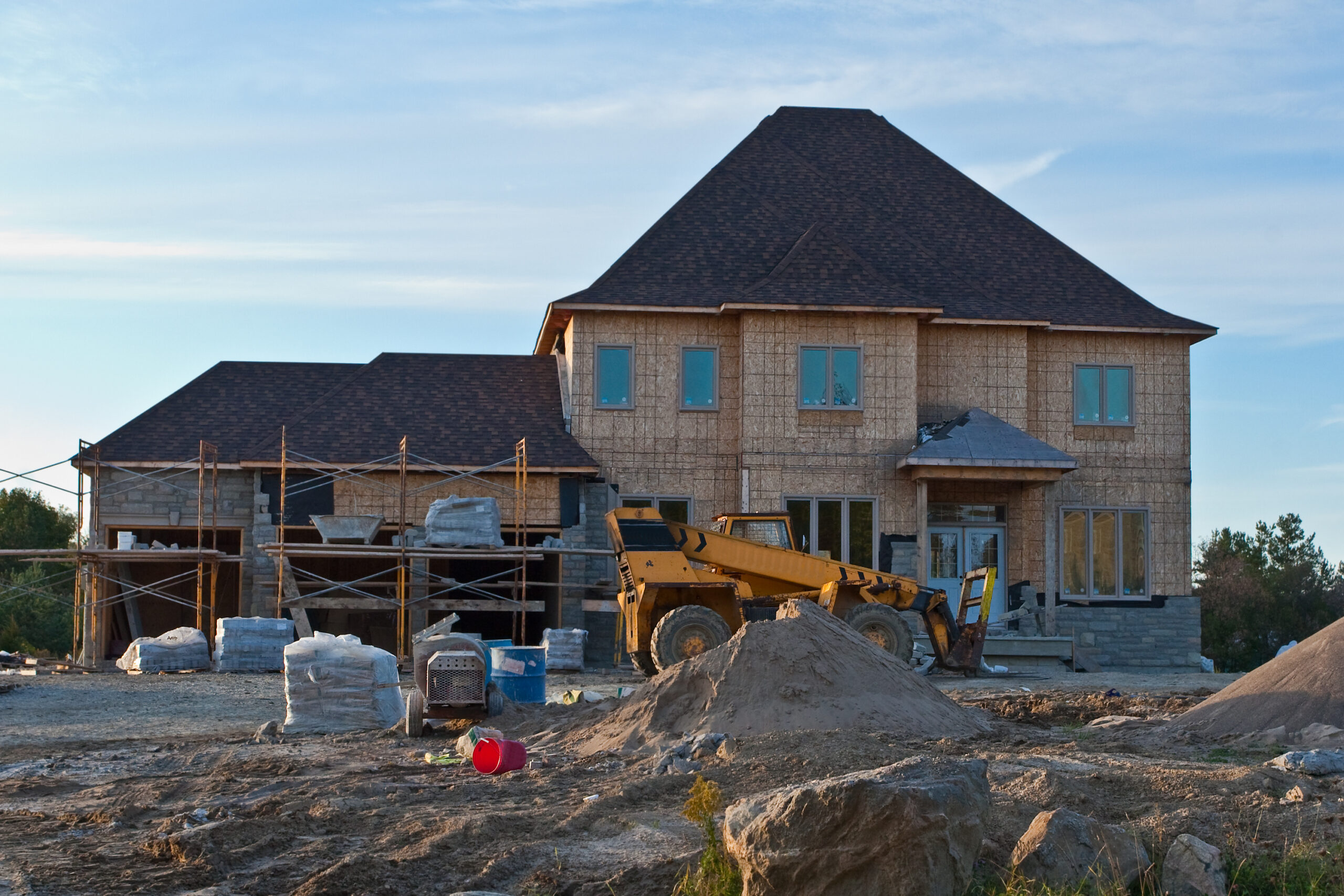Residential refurbishment offers a cost-effective solution compared to new builds.

The UK’s property market continues to evolve rapidly, with significant demand for residential properties due to housing shortages, an increasing focus on sustainability, and shifting lifestyle preferences. For small and medium-sized enterprises (SMEs) involved in property development, residential refurbishment has emerged as an essential and lucrative opportunity. Not only is refurbishment a more cost-effective solution compared to new builds, but it also plays a crucial role in addressing the pressing need for more liveable housing.
In this blog, we will delve into residential refurbishment finance for SME property developers in the UK, outlining why this is a growing market and how it presents an incredible opportunity for developers. We will also explore the financing options available to developers and the key trends driving the growth of the residential refurbishment market.
Understanding Residential Refurbishment
Residential refurbishment refers to the process of upgrading, renovating, or improving an existing residential property. It involves making significant changes to enhance the quality, functionality, and aesthetic appeal of a property. These changes can range from minor cosmetic work, such as painting or updating kitchens, to major structural renovations, such as converting a house into flats or a commercial building into residential use.
The refurbishment market has become particularly important in the context of the UK’s ongoing housing crisis. Rather than focusing solely on the construction of new homes, many property developers and investors are turning to existing properties for renovation. This approach allows them to meet growing demand while minimizing the time and cost associated with new construction projects.
Why Residential Refurbishment Is a Growing Market for SME Property Developers
Several factors contribute to the growing appeal of residential refurbishment for SME property developers in the UK. The demand for housing remains high, driven by factors such as population growth, lifestyle changes, and economic pressures. At the same time, government policies are designed to stimulate property investment and development, including refurbishment, and many of these initiatives benefit SMEs.
1. Addressing the Housing Shortage
The UK has long faced a housing crisis, with insufficient housing stock to meet the needs of a growing population. According to the National Housing Federation, the UK needs to build 340,000 homes annually to keep up with demand, but the actual output falls short. Many properties in the UK’s housing stock are outdated, inefficient, and require significant refurbishment to meet the standards of modern living.
As the demand for housing increases, many property developers, especially SMEs, have found residential refurbishment to be an effective way to address the shortage. Refurbishing and repurposing existing properties, particularly those in urban areas with good transport links, is faster and more affordable than building new homes from scratch. This makes refurbishment a viable option for SMEs looking to capitalise on the housing demand in the shortest time possible.
2. Government Incentives and Policy Support
The UK government has recognized the importance of residential refurbishment in solving the housing crisis, and several policies and initiatives support refurbishment projects, such as the increased planning constraints on demolition and rebuild in lieu of repurposing existing stock.
Other policies often include financial incentives and grants aimed at making properties more energy-efficient or helping developers with the costs of refurbishing dilapidated properties. For example the:
Energy Company Obligation (EC04) facilitates funding for energy-efficient home improvements, including insulation and renewable energy solutions.
Great British Insulation Scheme (GBIS) and Home Upgrade Grants (HUG) provide financial assistance for enhancing energy efficiencies in homes.
Social Housing Decarbonisation Fund.
With these incentives, SME property developers can access more favourable conditions for securing funding, which reduces some of the risks associated with residential refurbishment.
3. Cost-Effectiveness of Refurbishment Projects
In many instances, residential refurbishment is far more cost-effective than starting a new construction project. Building from the ground up can be prohibitively expensive, especially with the rising costs of land, materials, and labour. Additionally, the construction process for new builds takes much longer, meaning developers need to wait longer to see returns on investment.
Refurbishment, on the other hand, tends to be quicker and more affordable. While extensive refurbishments can be costly, they typically come in at a lower price point than full new builds. This cost-effectiveness is especially attractive for SMEs that have limited capital compared to larger developers, as it allows them to enter the property development market with less upfront investment.
Furthermore, refurbishing properties in areas that are already well-connected by transport and amenities can lead to higher returns on investment because the location is already attractive to buyers and renters.
4. Sustainability and Energy-Efficiency Demands
In recent years, the importance of sustainability in the property sector has increased dramatically. The UK government has set ambitious targets to achieve net-zero carbon emissions by 2050, and a significant portion of this will come from improving the energy efficiency of the housing stock.
Many older properties in the UK have outdated heating systems, poor insulation, and high carbon footprints. Refurbishment projects offer developers the opportunity to improve the energy efficiency of these properties, making them more attractive to buyers and tenants who are increasingly concerned about sustainability.
Sustainability-focused refurbishments, such as installing solar panels, modernizing heating systems, and improving insulation, can add substantial value to properties. In some cases, these eco-friendly upgrades also qualify for grants or tax relief, further enhancing the financial feasibility of refurbishment projects.
5. Changing Consumer Preferences and Demand for Personalised Spaces
The COVID-19 pandemic reshaped the way people live and work, causing a significant shift in consumer preferences. As remote work became the norm, many individuals began seeking homes that could accommodate home offices, outdoor spaces, and larger living areas. This shift in priorities created a new demand for residential refurbishments that cater to the changing needs of buyers and renters.
Property developers, including SMEs, can capitalise on this demand by refurbishing older homes to create spaces that meet modern lifestyle needs. For example, converting garages or basements into home offices, upgrading kitchens and bathrooms, and creating multifunctional living spaces are common refurbishment projects that appeal to contemporary buyers.
Financing Residential Refurbishment for SME Property Developers
While residential refurbishment presents a lucrative opportunity, securing finance is often one of the most significant challenges for small and medium-sized developers. Fortunately, there are a variety of financing options available to help SME property developers fund refurbishment projects.
At Assetz Capital we offer SMEs property finance that is specifically designed for residential refurbishment.
We offer short-term loans between 6 and 24 months, with an interest rate of 9.75%.
The LTGDV varies with the level of refurbishment being undertaken and for ‘heavy’ refurbishment it’s 67%. As we lend up to £5m, we can cater for larger scale projects. This type of financing can help developers bridge the gap between purchasing a property and securing longer-term financing. They are commonly used to cover the initial costs of a refurbishment project, especially when the developer needs quick access to capital.
These types of loans are popular in the residential refurbishment market due to their speed and flexibility. Developers can use them to finance property purchases and pay for refurbishment costs. Once the project is complete, the developer can then either repay and ‘exit’ the loan through the sale of the project, or if they are retaining the property, look to refinance it. At Assetz capital, we also offer refinancing options.
Development finance can also be used and is specifically for property developers, providing funding to cover the costs of purchasing, refurbishing, and selling or letting a property. We offer rates from 9.35%, terms up to 3 years, lend up to 70% LTGDV and fund projects up to £10m.
Development finance is typically provided in stages, with funds released as certain milestones in the project are met. This ensures that the lender is protected while allowing developers to manage their cash flow effectively.
IN conclusion, the UK’s residential refurbishment market is poised for growth, and small and medium-sized property developers are in an ideal position to capitalise on this opportunity. With rising demand for housing, government incentives, cost-effective renovation options, and changing consumer preferences, residential refurbishment offers a more accessible and lucrative alternative to new builds for SMEs.
Furthermore, with a wide array of financing options available, including residential refurbishment and development finance, SME property developers can access the capital they need to undertake residential refurbishment projects.
As the market continues to evolve, SMEs that adapt to the growing demand for residential refurbishments will not only play a crucial role in solving the housing crisis but also tap into a lucrative growth area for their business.
If you have a residential refurbishment project that needs financing, why not call our New Business team on 0800 470 0430.
Alternatively, simply complete the form below and one of our expert team will get straight back to you.




